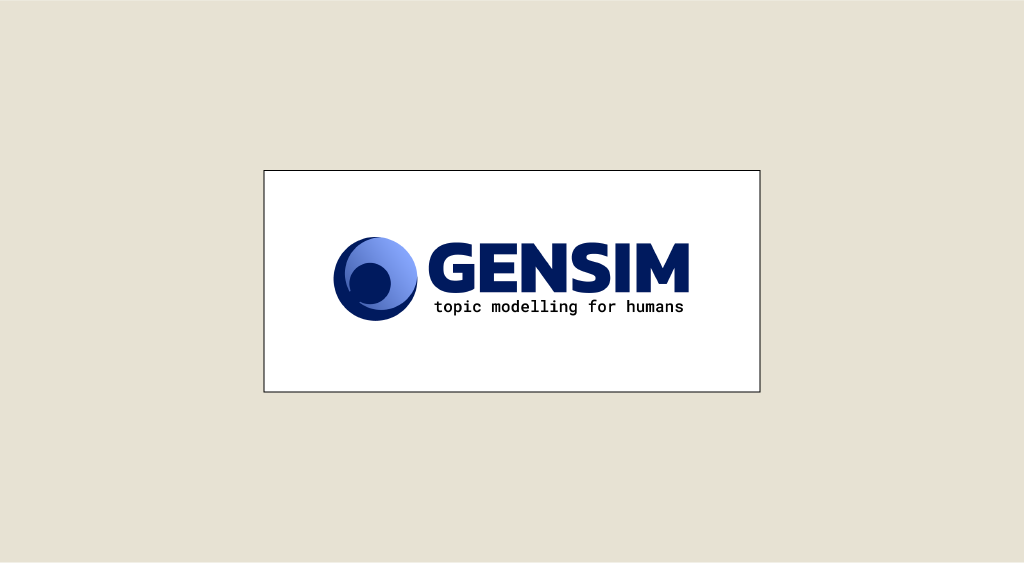Gensim is an open-source natural language processing (NLP) library in Python whose aim is to make topic modeling as accessible and efficient as possible.
First, it’s important to understand what topic modeling is. It’s an “unsupervised” Machine Learning technique that automatically analyzes sets of texts to highlight the main topics.
How topic modelling works is fairly straightforward. It involves counting words and grouping word frames to deduce the theme within unstructured data.
Gensim features
Gensim focuses on unsupervised learning and offers various functions and algorithms to handle the following tasks:
Text pre-processing is an important step in preparing text data for analysis. This includes stopword removal, lemmatization, case normalization and frequent word removal.
These functions clean up the textual data, making it easier to use.
For topic modeling, as mentioned earlier, the aim is to find themes in a set of texts. Gensim includes algorithms such as Latent Dirichlet Allocation (LDA) and Hierarchical Dirichlet Process (HDP).
Topic modeling is useful for analyzing large quantities of text, particularly in the fields of information retrieval and sentiment analysis.
Semantic similarity is a measure of the semantic proximity between two texts or words.
Text classification is an NLP technique that classifies texts into predefined categories. Sentiment analysis, for example, classifies texts according to their emotional tone.
Information retrieval is an NLP technique that finds relevant information in a set of texts.
Gensim offers algorithms such as inverse indexing (which creates an index of all words in a set of texts) and term search (which finds texts containing a specific word or expression).
Information retrieval is useful for analyzing large sets of texts, particularly in the field of business intelligence and social media analysis.

The limits of Gensim
Despite the importance of the tasks that can be carried out with Gensim, it’s important to understand its limitations. First and foremost, this library doesn’t provide enough tools to run an NLP project from start to finish. The use of another library, such as NLTK or spaCy, is recommended.
Gensim was designed for unsupervised topic modeling, and will be less suited to topic classification.
Why use Gensim?
Gensim’s motto is “topic modelling for humans”. The aim of this library is to offer an easy-to-use, high-performance way of representing documents in semantic vectors.
One of Gensim’s great strengths lies in its ability to work with large datasets and to “process” streaming data. This allows the training corpus to reside partially on RAM.
This library will run on all platforms (Windows, macOS, Linux) and has been developed to be as fast as possible for vector embedding.
What’s more, Gensim supports Deep Learning!
Conclusion
Gensim is an extremely powerful tool for subject modeling. Designed by professionals, this tool has been optimized to handle large datasets in a minimum of time.
Gensim’s vocation is not to carry out an NLP project in its entirety, but to concentrate on supervised learning. It will be possible to use it in conjunction with other NLP libraries such as Spacy or NTLK.
Now that you know all about Gensim, if you want to learn how to use it, don’t hesitate to choose DataScientest’s Data Science training courses.
Each course includes a module dedicated to learning Python and its libraries.










